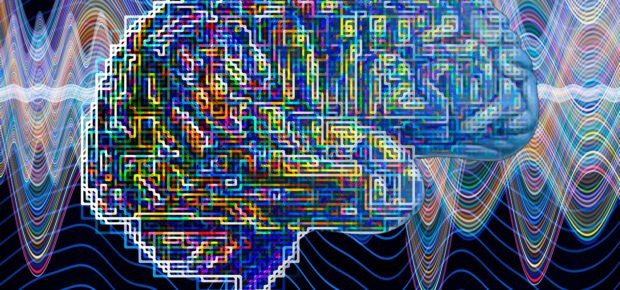January 9, 2024
When you sit down at the end of the day to watch your favorite TV show, your streaming service will usually suggest other shows to watch. Those suggestions are based on the behavior of users like you, as determined by artificial intelligence and machine learning.
But how does the artificial intelligence model actually make that determination? How does it crunch the numbers behind the thousands of programs hosted on the streaming service’s servers? How does it process the data it has about you to determine which other users you are similar to?
Questions about entertainment may seem like low stakes, but artificial intelligence systems are being used in situations that can straddle life and death like self-driving cars and healthcare diagnostics. And those systems face similar questions, leading some to refer to AI systems as “black boxes.”
The explainable AI (XAI) movement has focused on helping people answer them, with the goal of building trust in AI results, while helping people understand its limits.
“Our first challenge has been making the public aware of the implications of using and trusting AI,” said IEEE Fellow Karen Panetta. “Having AI provide decisions that can impact people’s lives, careers, health or safety requires absolute clarity on how it arrived at these decisions and how humans should use the information.”
Why Do We Need XAI?
Explainable AI is a hot topic. An article published in IEEE Access, titled “Peeking Inside the Black Box: A Survey on Explainable Artificial Intelligence” is one of the journal’s most frequently read articles.
The October 2021 edition of IEEE Computer Magazine devoted several articles to the subject.
And interest has only increased in recent years with the release of powerful generative AI models and our growing reliance on AI in several industries.
According to the IEEE Access article, there are four main reasons for XAI: to show why an AI’s output is accurate; to prevent erroneous or biased predictions; to provide a pathway to improve the AI model; and to harness new insights in other fields of study.
What’s The Risk of AI Error?
To understand why explainable AI is necessary, consider some of the risks of AI going wrong.
- In transportation, autonomous vehicles have mistaken humans for other objects, like plastic bags, leading to disastrous consequences.
- In healthcare, a machine learning algorithm was trained to predict which pneumonia patients needed to be admitted to the hospital and which could be treated in an outpatient setting. The algorithm came to the mistaken conclusion that patients with asthma were at lower risk of dying. In fact, patients with asthma tended to get more intensive pneumonia treatment, and were more likely to live as a result. That result, however, did not provide guidance on what to do before treatment.
- In finance, regulations usually require lenders to explain to applicants why they were denied credit. But if machine learning models applied to lending decisions are opaque, lenders may not know why the model denied an application for a mortgage.
Why Is AI Called a ‘Black Box’?
To IEEE Senior Member Antonio Pedro Timoszczuk, there are two reasons AI might be referred to as a “black box.” The first is that we cannot understand what’s going on at all. The second is that AI’s process is outside the human capability to visualize easily.
He believes it’s the second one. And this is particularly true for types of AI that mimic human cognition, like artificial neural networks. Essentially, AI functions by transforming input data from Point A into a specific output at Point B. The process involves various mathematical functions that organize and interpret the data, enabling it to be categorized or distinguished in meaningful ways.
The input data’s quality and variety significantly influence the outcomes. However, pinpointing precisely what happens inside the AI during this transformation is challenging. The reason is the vast number of dimensions AI operates in; it could be dealing with hundreds or even thousands of variables simultaneously. This complexity is what makes the inner workings of AI akin to a puzzle.
There’s an alternative perspective, though. Rather than trying to dissect the internal mechanics of AI, we can approach it systemically. This means starting with a clear understanding of the problem we aim to solve with AI, and carefully selecting the relevant data needed for this purpose. Avoiding unnecessary data simplifies the analysis. By examining AI from this systemic viewpoint, we can gain insights into its behavior and potentially trace back to the roots of any errors or unexpected outcomes.
To IEEE Senior Member Sambit Bakshi, calling AI a black box implies that its internal mechanisms aren’t understandable or interpretable.
“If that were the case, then debugging or auditing could have been challenging. However, that is not the case,” Bakshi said. “There are several strategies that can be employed to understand and rectify the erroneous outcomes of an AI-based system. Model interpretation tools, such as feature analysis can determine the important features that can provide insights into what contributes more towards the model’s decisions.”





 Liquid Infrastructure: Our Planet's Most Precious Resource
Liquid Infrastructure: Our Planet's Most Precious Resource The Impact of Technology in 2025
The Impact of Technology in 2025 Quantum and AI: Safeguards or Threats to Cybersecurity?
Quantum and AI: Safeguards or Threats to Cybersecurity? Why AI Can't Live Without Us
Why AI Can't Live Without Us Bits, Bytes, Buildings and Bridges: Digital-Driven Infrastructure
Bits, Bytes, Buildings and Bridges: Digital-Driven Infrastructure Impact of Technology in 2024
Impact of Technology in 2024 Emerging AI Cybersecurity Challenges and Solutions
Emerging AI Cybersecurity Challenges and Solutions The Skies are Unlimited
The Skies are Unlimited Smart Cities 2030: How Tech is Reshaping Urbanscapes
Smart Cities 2030: How Tech is Reshaping Urbanscapes Impact of Technology 2023
Impact of Technology 2023 Cybersecurity for Life-Changing Innovations
Cybersecurity for Life-Changing Innovations Smarter Wearables Healthier Life
Smarter Wearables Healthier Life Infrastructure In Motion
Infrastructure In Motion The Impact of Tech in 2022 and Beyond
The Impact of Tech in 2022 and Beyond Cybersecurity, Technology and Protecting Our World
Cybersecurity, Technology and Protecting Our World How Technology Helps us Understand Our Health and Wellness
How Technology Helps us Understand Our Health and Wellness The Resilience of Humanity
The Resilience of Humanity Harnessing and Sustaining our Natural Resources
Harnessing and Sustaining our Natural Resources Creating Healthy Spaces Through Technology
Creating Healthy Spaces Through Technology Exceptional Infrastructure Challenges, Technology and Humanity
Exceptional Infrastructure Challenges, Technology and Humanity The Global Impact of IEEE's 802 Standards
The Global Impact of IEEE's 802 Standards Scenes of our Cyber Lives: The Security Threats and Technology Solutions Protecting Us
Scenes of our Cyber Lives: The Security Threats and Technology Solutions Protecting Us How Millennial Parents are Embracing Health and Wellness Technologies for Their Generation Alpha Kids
How Millennial Parents are Embracing Health and Wellness Technologies for Their Generation Alpha Kids Space Exploration, Technology and Our Lives
Space Exploration, Technology and Our Lives Global Innovation and the Environment
Global Innovation and the Environment How Technology, Privacy and Security are Changing Each Other (And Us)
How Technology, Privacy and Security are Changing Each Other (And Us) Find us in booth 31506, LVCC South Hall 3 and experience the Technology Moon Walk
Find us in booth 31506, LVCC South Hall 3 and experience the Technology Moon Walk Virtual and Mixed Reality
Virtual and Mixed Reality How Robots are Improving our Health
How Robots are Improving our Health IEEE Experts and the Robots They are Teaching
IEEE Experts and the Robots They are Teaching See how millennial parents around the world see AI impacting the lives of their tech-infused offspring
See how millennial parents around the world see AI impacting the lives of their tech-infused offspring Take the journey from farm to table and learn how IoT will help us reach the rising demand for food production
Take the journey from farm to table and learn how IoT will help us reach the rising demand for food production Watch technical experts discuss the latest cyber threats
Watch technical experts discuss the latest cyber threats Explore how researchers, teachers, explorers, healthcare and medical professionals use immersive technologies
Explore how researchers, teachers, explorers, healthcare and medical professionals use immersive technologies Follow the timeline to see how Generation AI will be impacted by technology
Follow the timeline to see how Generation AI will be impacted by technology Learn how your IoT data can be used by experiencing a day in a connected life
Learn how your IoT data can be used by experiencing a day in a connected life Listen to technical experts discuss the biggest security threats today
Listen to technical experts discuss the biggest security threats today See how tech has influenced and evolved with the Games
See how tech has influenced and evolved with the Games Enter our virtual home to explore the IoT (Internet of Things) technologies
Enter our virtual home to explore the IoT (Internet of Things) technologies Explore an interactive map showcasing exciting innovations in robotics
Explore an interactive map showcasing exciting innovations in robotics Interactively explore A.I. in recent Hollywood movies
Interactively explore A.I. in recent Hollywood movies Get immersed in technologies that will improve patients' lives
Get immersed in technologies that will improve patients' lives